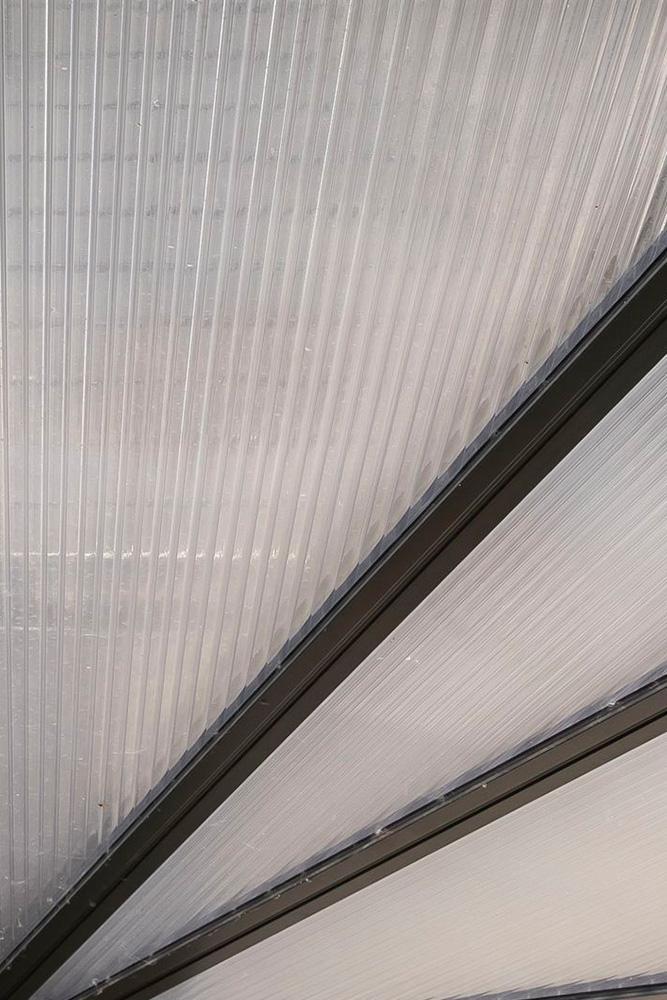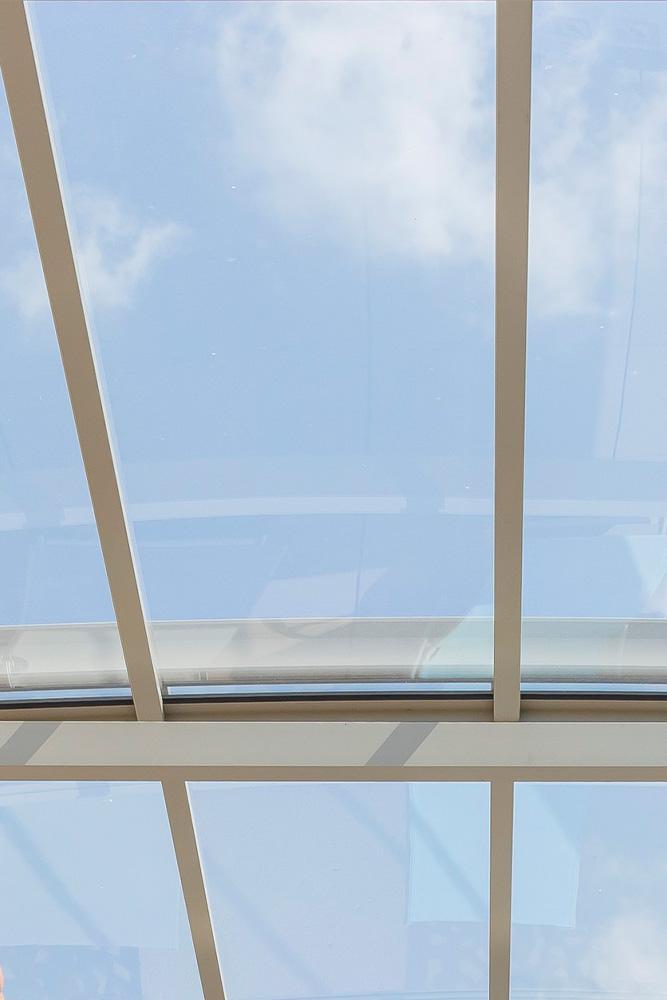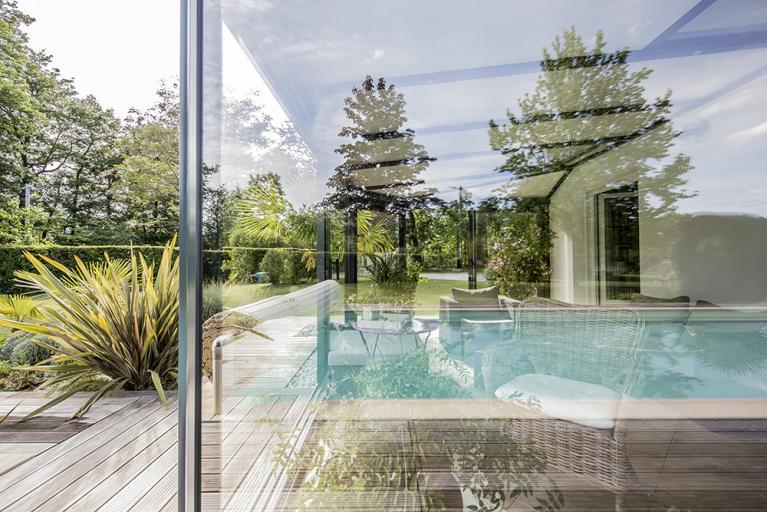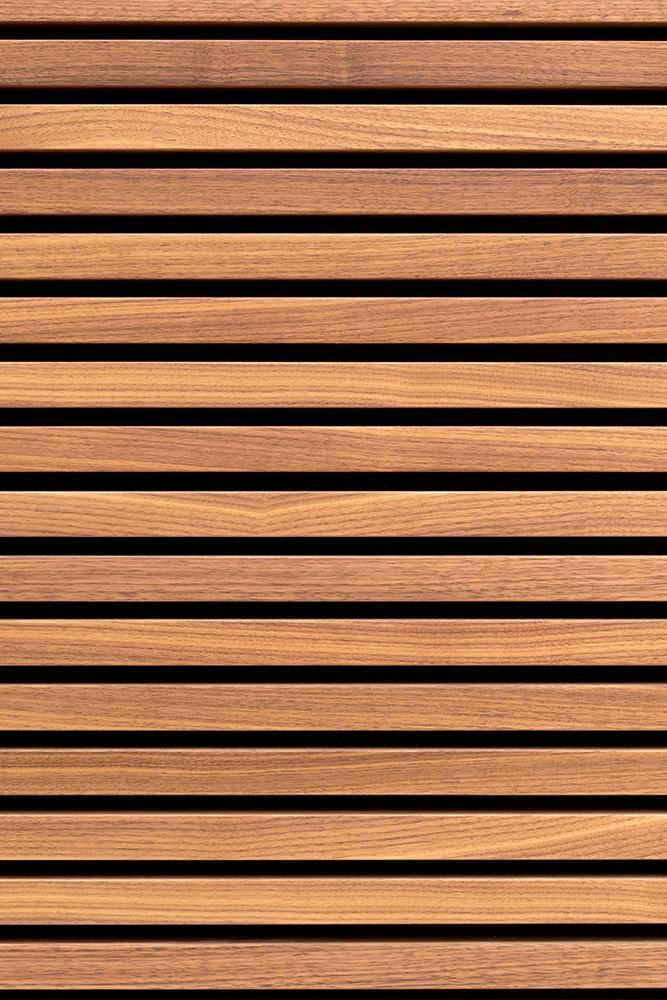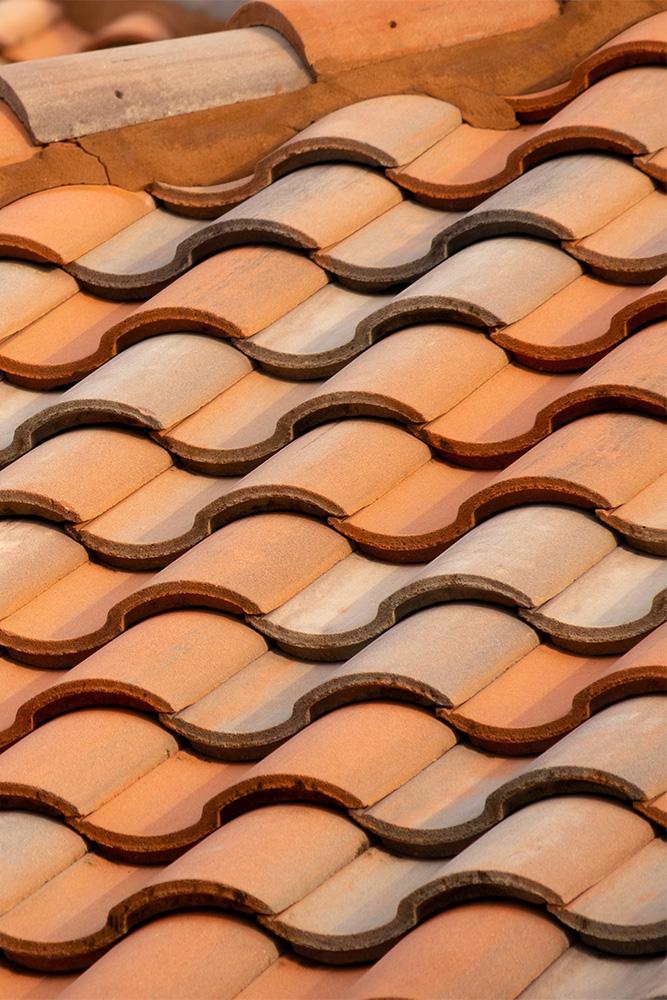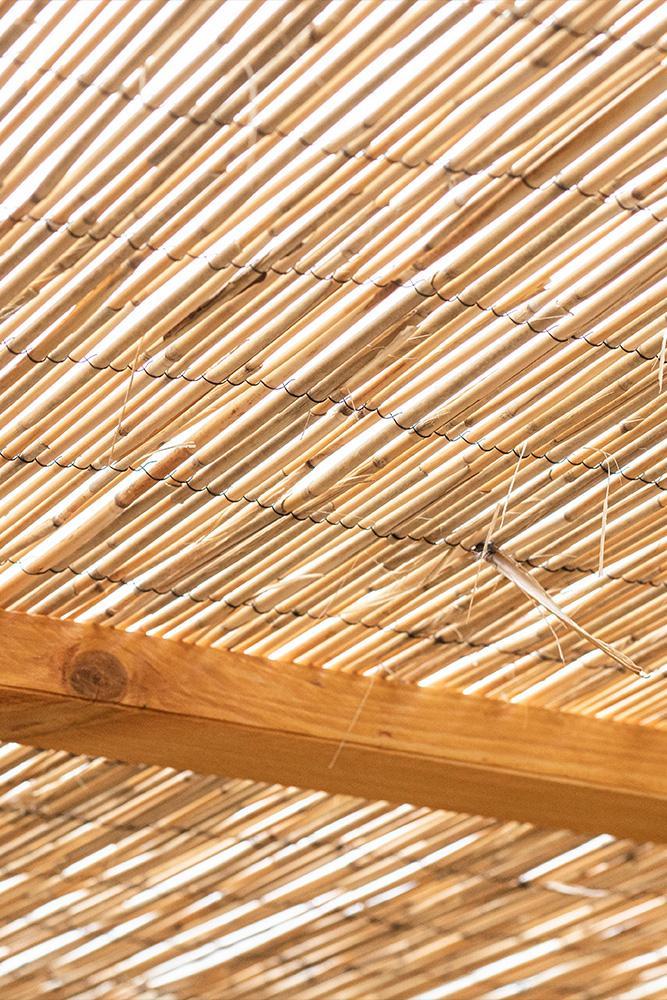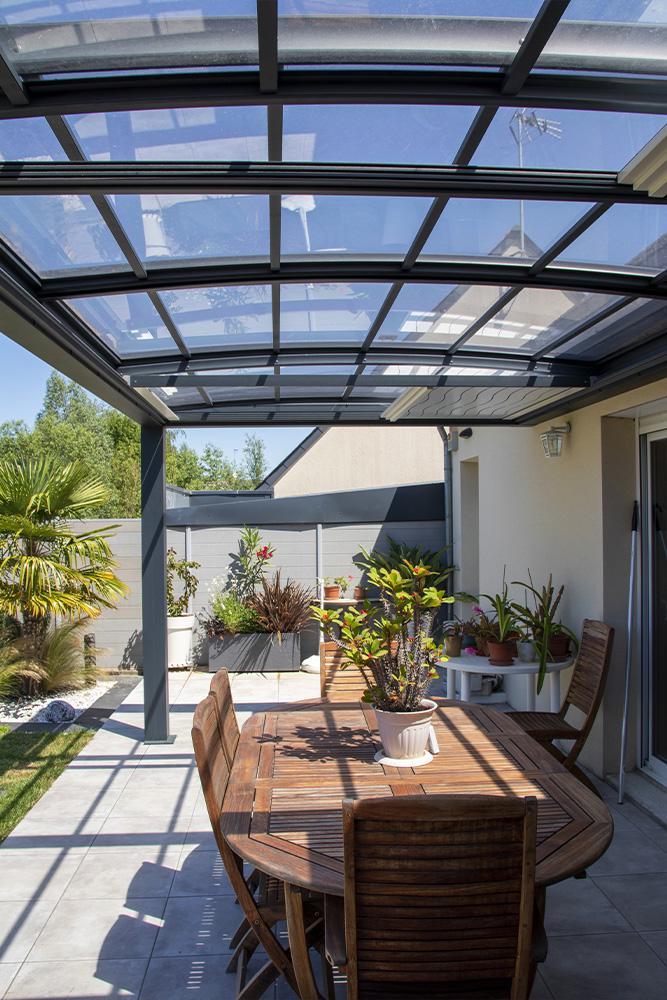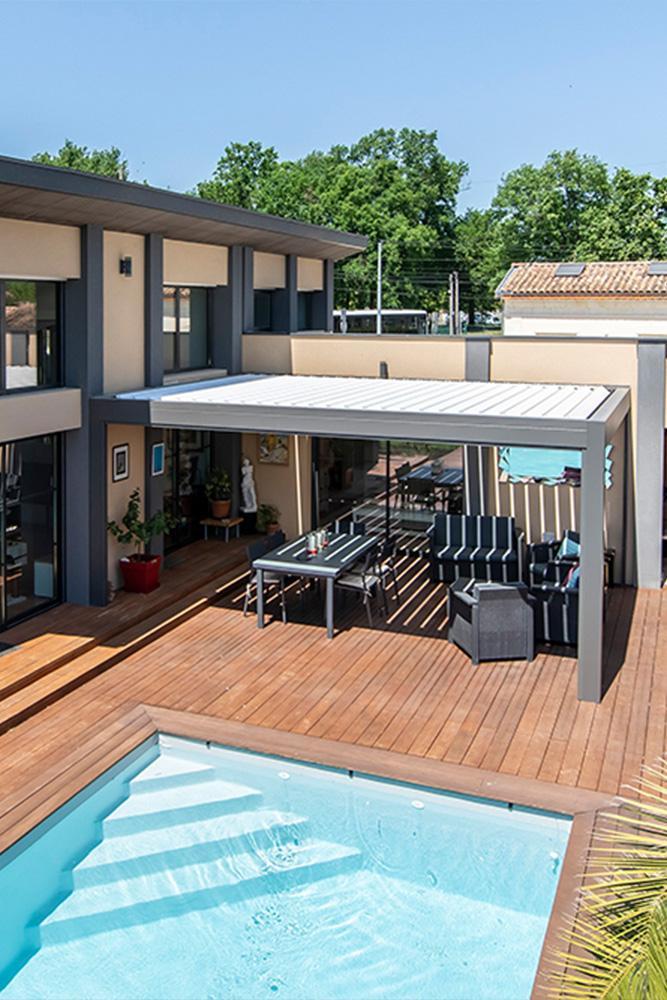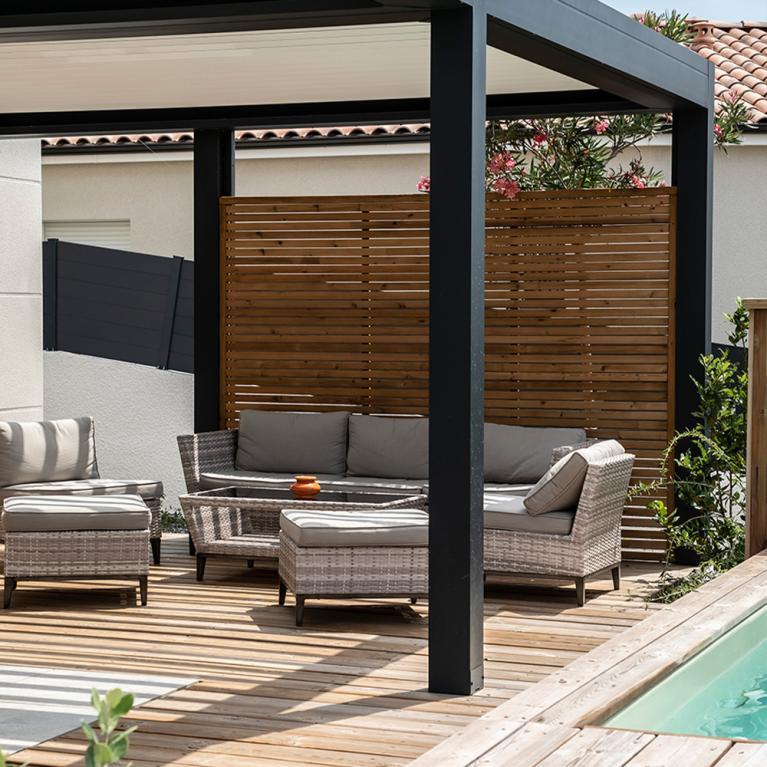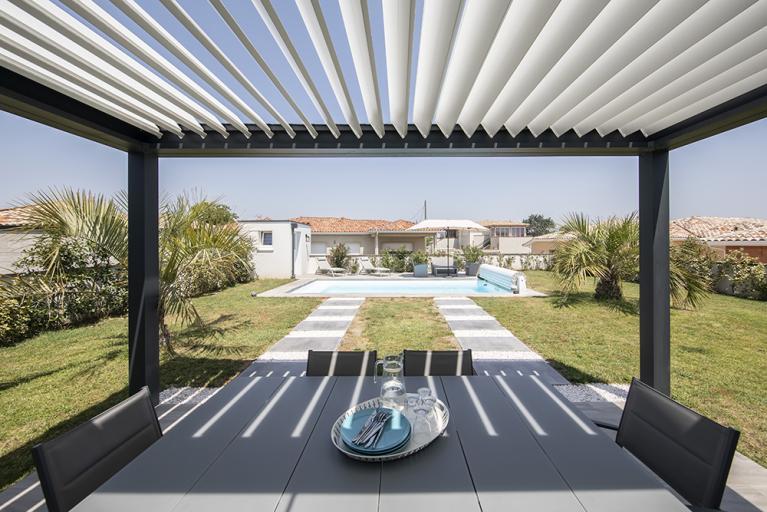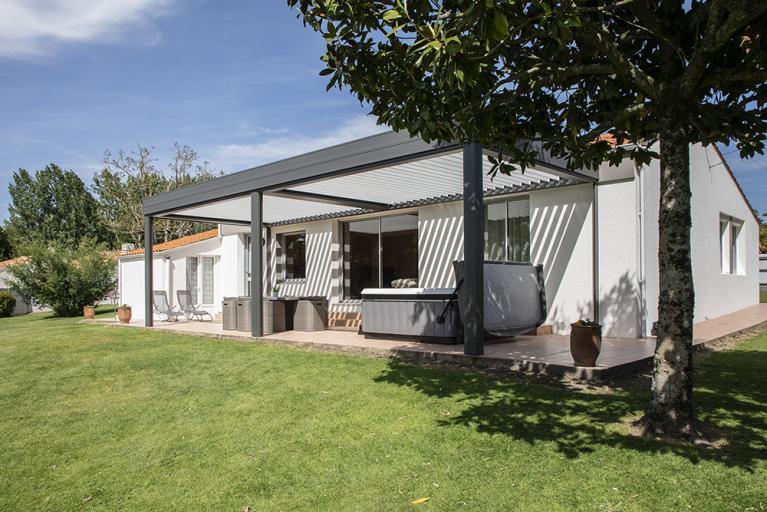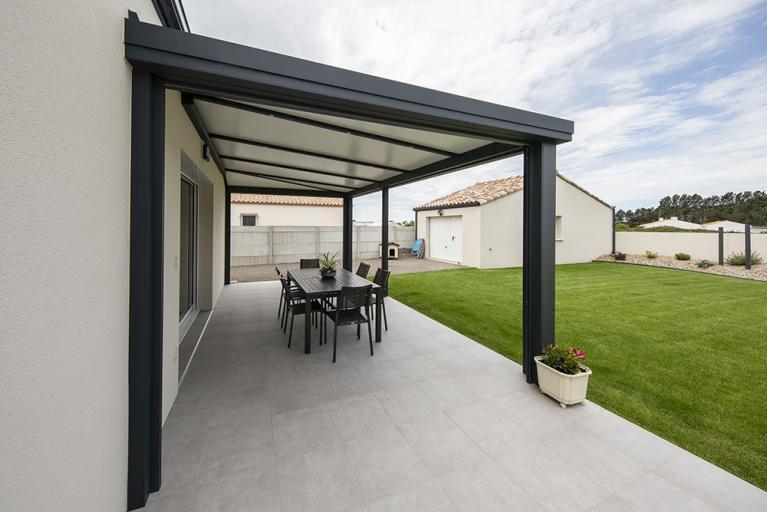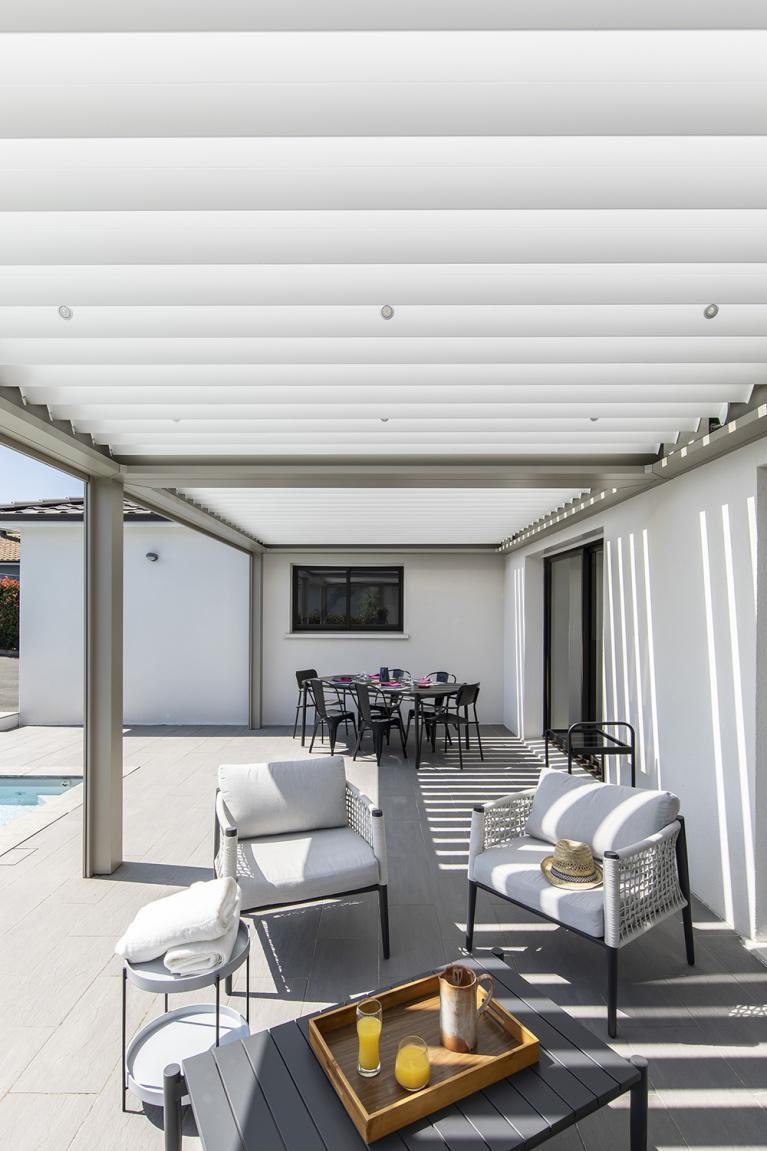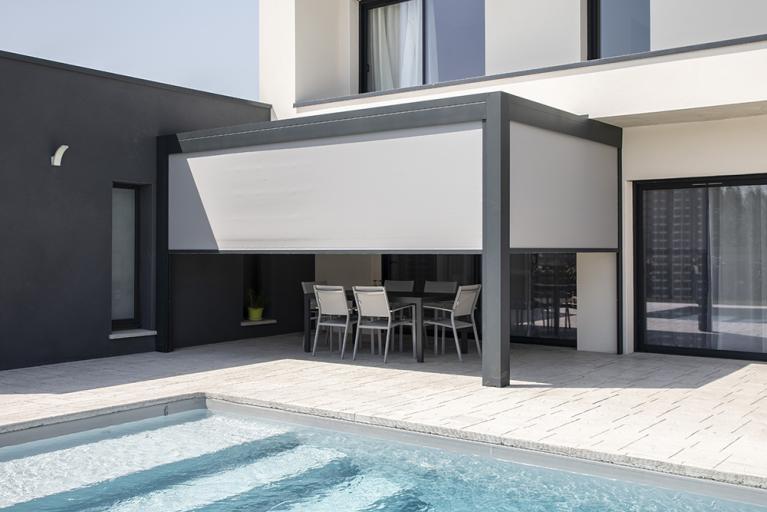What materials should be used for a pergola?
To make the most of your outdoor space, you've decided to install a pergola. More and more modern and attractive, contemporary pergolas are real places to relax. Now you can spend time with your family and friends in the garden, protected from the sun and the elements! Let's take a moment to look at the materials best suited to building the shelter of your dreams.
Materials for the structure of your pergola
The structure of a pergola is usually made of wood, aluminium or wrought iron. Some pergolas are made of PVC, but this material is not durable.
Aluminium is gradually replacing wood, even though the latter has a long history and is highly aesthetic. The fine, clean lines that make up modern pergolas call for a very malleable material. What's more, aluminium is durable and requires little maintenance. However, wood and wrought iron are still very popular. Let's compare these three materials.
An aluminium structure
Whatever type of pergola you're thinking of building, aluminium adapts to any environment. If your pergola is lean-to, it will be in perfect harmony with your house. If you want to build a freestanding pergola, it will blend in with the natural landscape.
Considered to be a top-of-the-range material, aluminium is ultra-resistant. It won't rust or be damaged by the elements or UV rays. Maintenance is quick and easy. We recommend cleaning your aluminium pergola twice a year with soapy water. Child's play!
If you're planning to install a bioclimatic pergola, aluminium is THE star material. It's highly acclaimed for its durability, recyclability and eco-friendliness. What's more, the adjustable slats of an aluminium bioclimatic pergola dry quickly, which is very useful on rainy days.
One final advantage: manufacturers offer aluminium structures in a range of colours.
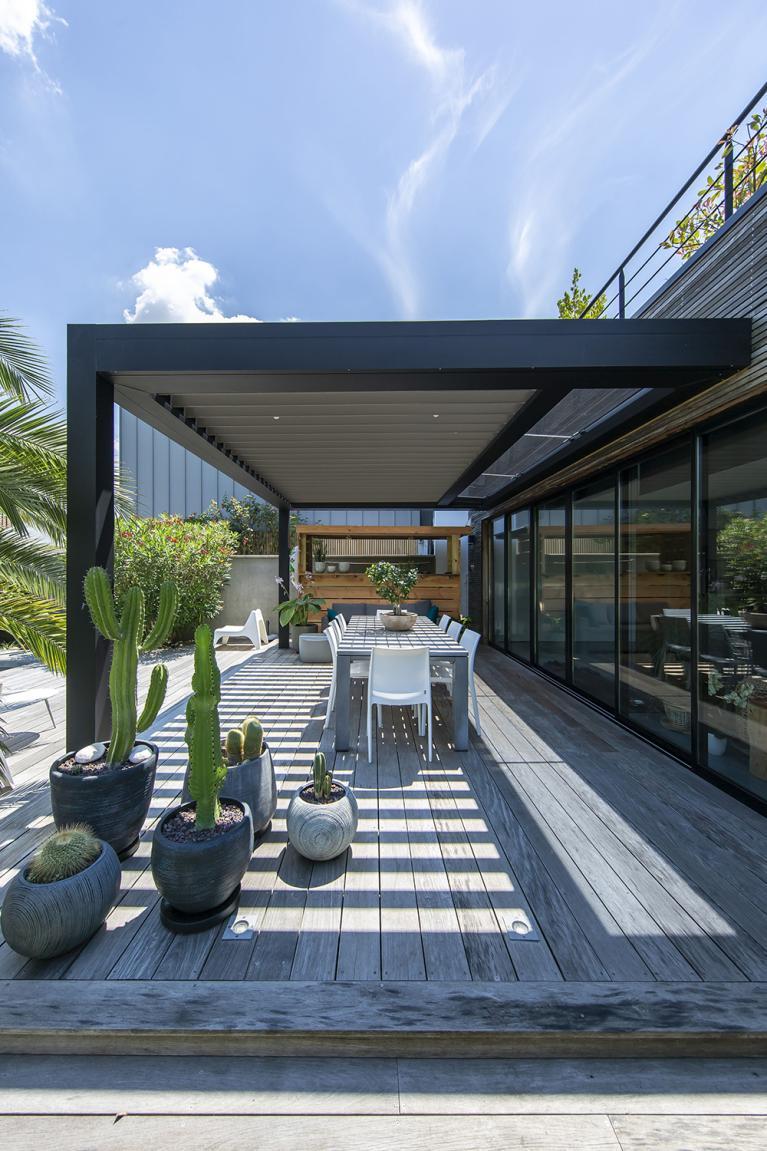
The traditional wooden structure
Wood is the most elegant material used in the construction of pergolas. Reminiscent of the pergolas in Italian gardens, wood gives your garden a romantic air. You can build a bioclimatic pergola in wood. Wood blends in perfectly with a green environment, giving it a warm, natural look.
However, there are a few things to bear in mind. As wood is a living material, it reacts to climatic conditions and needs to be treated. It's best to opt for category 3 and 4 species (oak, pine, teak, cedar, etc.), which are quite suitable for outdoor use. Autoclave treatment protects natural wood from damage by insects and fungi.
Wood is also used for the structure and adjustable slats of some bioclimatic pergolas.
The wrought iron pergola
The poetic, old-fashioned curves of wrought iron!
This time-honoured craft adds character to any outdoor space. It's robust and goes beautifully with climbing plants. However, wrought iron pergolas are becoming increasingly rare, as this material requires meticulous maintenance. No matter how solid it is, iron crumbles and rusts. It therefore needs to be maintained with scouring cream, rust spots need to be sanded down and the structure needs to be regularly painted with anti-rust paint.
Roofing materials for pergolas
Pergola roofs are usually made of the following materials:
If you choose a tiled roof, choose a model similar to the roof of your house to create harmony.
Polycarbonate is one of the most commonly used materials for aluminium pergola roofs. It lets in natural light while protecting against UV rays.
Find all the articles in the magazine
You have a project?
Would you like a personalised 3D study and a free quotation? Contact us by clicking below.
AKENA is...
Over 40 years of experience
Founded in 1981 by one man, we now have more than 500 employees dedicated to making your project a success.
Made in France
A historic site and two factories covering more than 25,000 m² in Dompierre-sur-Yon in the Vendée region (85)
Innovative and tailor-made products
At AKENA, we are brimming with new ideas to improve and enhance our products.
The European leader in conservatories, pergolas...
But not only! AKENA also offers a complete range of carports and pool houses.
